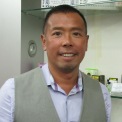
- Product development considerations including the benefits of scientific verification, possible contradictio...
In 2000, there were no Chinese medical hospitals in Hong Kong. As a result, once he had completed his Chinese medicine studies here, Gan Fock Wai sent Hoe Hin’s products to the Beijing Hospital of Traditional Chinese Medicine for clinical examination. The aim was to obtain verification from an authoritative independent institution of the effectiveness of the products. The preliminary results of these clinical tests indicated that Pak Fah Yeow had a highly efficacious curative effect on wind-heat, headaches and nasal congestions. Sending Hoe Hin’s products to scientific tests not only helped the product to gain recognition, but also showing to the younger generations that Chinese medicines are susceptible to scientific tests. This helps users to understand the curative effect of Hoe Hin Pak Fah Yeow from a new perspective. It also enables Hoe Hin to promote and develop its products based scientific evidence.
When it came to developing new products, Gan Fock Wai admits that he and the company had different philosophies. Before launching a new product, Hoe Hin first carried out extensive toxicological tests, usually on animals. Hoe Hin had conducted such tests when it launched its Hoe Hin Strain Relief product and also in the year it began exporting Pak Fah Yeow to Canada. At the beginning, Gan Fock Wai had no objections to animal tests, but over the years he had learned that animals also had a right to life. Knowing that any animals used for skin tests would be killed after the tests , he began opposing these tests. At one point, he stopped developing new products and even refused to read company documents relating to animal tests. In the system of Registration of Proprietary Chinese Medicines in Hong Kong, traditional medicines only required temporary registration and did not need to pass toxic examination. Because of this, Gan Fock Wai focused on developing Hoe Hin products that had a long history and did not have to go through any toxic tests, so that he would not have to do any tests that might hurt small animals.
Hoe Hin had particular designs in product packaging to attract different groups of customer. For products which used to have a good sale record, Hoe Hin kept the original packaging design that loyal consumers were well familiar with. Pak Fah Yeow’s floral scented variants were rebranded and repackaged into the “Fuzai 239” to attract the younger consumers. As the company’s floral scented series only had a history of 10 to 20 years, its change in packaging had little adverse effect on sales.

- Hoe Hin’s evolution from a family business to a listed company. Hoe Hin’s corporate policy
In the past, Hoe Hin was a family business. When Gan Fock Wai’s father, Gan Geok Eng, founded the company, the board of directors was formed by many family members including Gan Fock Wai’s mother and sister. Gan Fock Wai remembers that as no family member was ever involved in Hoe Hin’s daily operation, some family members got paid without doing any actual work. After the company became a listed company in 1991, Gan Fock Wai and Gan Wee Sean were the only Gan family members left on Hoe Hin’s board of directors. Now that the company is no longer a family business, the shareholders are the bosses of the company while Gan Fock Wai is the executive director managing the day-to-day operation of the company. Gan Fock Wai sees himself as just another employee of the company whose job is to make money for the shareholders.
Gan Fock Wai believes that there is no need to retain the family culture in Hoe Hin’s present development. Pak Fah Yeow, for example, had already been registered as a proprietary Chinese medicine so its formula was made public and was no longer a secret. For this reason, its blending no longer needed to be carried out by a Gan family member for it to be accurately done. As long as there are no errors in the blending procedures and production systems, and the employees are adequately rewarded, the company can run well by mutual monitoring based on common sense .
Gan Fock Wai still holds a management position in Hoe Hin, insisting that environmental protection and social responsibility are the company’s corporate goals. He feels that as Hoe Hin is very stable in respect of operation, sales and property rental income, it is unlikely that there will be any sudden, major expansion in the future. Gan Fock Wai is staying with Hoe Hin to ensure that the company continues to adhere to the corporate values of environmental protection and social responsibility. If Hoe Hin employs another chief executive officer to manage Hoe Hin and changes its corporate policy just to increase profits, Gan Fock Wai thinks he will withdraw from the company.
Gan Fock Wai is responsible for several major investment projects of Hoe Hin, and feels stressful about this job . Gan Fock Wai believes that in trying to earn more profits for Hoe Hin, he may become too agreesive and made bad investment decisions. Today, he often reminds himself that Hoe Hin’s investment strategy need not be too aggressive, as security and stability are the most important factors in wealth accumulation step by step.

- Textile industry in an indsutralist's eyes
Ha Chung Fong had a profound relationship with the textile industry. The Textile industry was highly diversified. From dyes and fabrics, many experts have spent extensive effort in improving the techniques involved. The improvement in synthetics and chemicals helped the advancement in society. Textile industry involved the knowledge of chemical, weaving and knitting techniques and the understanding of machinery. Professionals in these fields were constantly required in the industry. Textile industry first started in Europe, and then Japan, before coming to Hong Kong, Taiwan and South Korea. Textile industry contributed to the growth of a society. It was one of the basic components of an industrialized country. With textile industry providing a solid foundation, a country could develop other industries. Taking India as an example, the country's textile industry provided the impetus for its animal husbandry, and sericulture for harvesting silk. The plantation of cotton had also helped the development of agriculture. Thus textile industry was interconnected with other industries such as livestock and agriculture, providing essential job opportunities for a society.

- Upholding the development of plastic processing industry
Tins’ Chemical and low-end manufacturers (1). When KP Tin first ran his factory in Hong Kong, he produced only plastic films but no more resin products. The cost of opening and operating the factory mainly came from his savings. Although he had the support from raw material vendors and banks, he relied mainly on his own finance. In 1962, Tins' Chemical Industrial Co Ltd (the former company of which was Thian’s Plastic Factory, referred to as Tins’) erected an industrial building at Lai Chi Kok Road, Cheung Sha Wan and rented it to the processing factories that purchased Tins’ films. Warehouses for plastics were on the lower floors while workshops for material preparation and silk printing were on the upper floors. With all the supporting facilities combined transport and storage costs for low-end manufacturers were reduced, and thus facilitating the development of low-end industries as well as their competition against their Taiwan counterparts.
Hong Kong Government’s industrial and commercial representatives promoted for Tins’ overseas. At the same time, Tins’ ran a showroom at Bonham Strand East, displaying the products and contacts of low-end manufacturers. On a cheap price, Tins’ provided middle-man services to help the processing factories promote their businesses. Prior to the set-up of the Tins’ plant, local plastic processing factories imported films from Japan and Taiwan. The plastics produced locally by the Tins’ benefited the local plastic processing industry. The films KP Tin produced in Hong Kong had been greatly improved from the ones made in Indonesia. Tins’ films were slightly better than the Taiwan products and slightly poorer than the Japanese ones. Local manufacturers were not demanding over plastics (except for gas-filled dolls). What really mattered was the processing procedures themselves.
Tins’ Chemical and low-end manufacturers (2). When KP Tin first came to Hong Kong, the local plastic industry was not well developed given the dear land prices and undeveloped foreign trade. Overseas representatives of the Commerce and Industry Department invited foreign businessmen to Hong Kong and referred local manufacturers to the foreign businessmen for the purchase of raw materials. In 1962, KP Tin bought a site at Lai Chi Kok Road and turned it to an industrial building. It was leased to processing manufacturers on a low price. It came with a workshop for material preparation, which plastics were tailored for the manufacturers before they were outsourced to the households in the resettlement estates for the next procedures. Transportation in Tuen Mun was inconvenient in those days. KP Tin bought land and built an industrial building in Cheung Sha Wan and brought the processing manufacturers together for better cooperation among themselves. Finished products processed from Tins’ films included toys, gas-filled dolls, big water-filled bed, school bags, pencils and stationeries. The artificial leather made by Tins’ at a rather late stage. It could be used for making raincoats, coats, travelling bags, handbags, etc. With the continuous introductions of new raw materials by vendors, and with the new technology acquired from KP Tin’s trips abroad, Tins’ plastics underwent some breakthroughs and had wider applications gradually. The raw materials used by Tins’ included PVC powder, stabilizers and others, which came from countries like Japan and Germany.
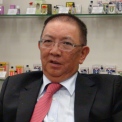
- How Gan Wee Sean integrated himself into the company
Gan started from the bottom and learnt almost every aspect of the business. Gan went to the factory to formulate the oil. From around 1978 onwards, Gan’s grandfather fell ill and Gan gradually took over the business. The factory delivered the orders via a transportation company whenever the distributors placed orders. The products were also exported to Thailand (since the 1960s), the U.S. (since the 1980s), Australia (since the 1990s), and other parts in the South East Asia, but the Hong Kong market was always the biggest share. The company also received orders from the Philippines where they set up a packaging plug doing bottling and packaging. In the Philippines, the company could enjoy lower import duty If only semi-finished products were imported.
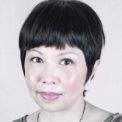
- Conflict and accommodation during second-generation takeover. Finding big customers: K-Mart and Avon
When Lau Tik Wah joined Champion Industrial Co. Ltd., her father intended to appoint her as a secretary. Hoping to work in design and in management to formulate the company’s plans, she refused the offer. So her father made her his personal assistant and brought her along to meet clients. The title on her business card was Assistant to Managing Director. Lau Tik Wah took the initiative to go to different departments and learn about the works of different positions. At the beginning, there was much friction between Lau Tik Wah and the senior company staff because she, as someone who studied in the USA, disliked complacency and wanted to improve business results through raising product quality and workplace efficiency. The senior staff thought she was being pompous and derided her ability to take over her father’s business. There were a lot of conflicts.
In the mid-1970s, Champion received a large number of orders from K-Mart and Avon, among other American companies. Emphasis was on quantity, and the company lacked the propulsion to advance its product quality. Lau Tik Wah believed in the importance of quality in order for the company to stand out in times of economic downturn. Her motto was ‘either sink or swim’. Mr. Kong, a major stockholder of the company, was in charge of the company’s funds and did not involve himself much in the daily operation. A lot of staff was either his old classmates or relatives. Mr. Kong himself was kind to others and was not very willing to sack those staff members who were lazy and who neglected their duties.
When Lau Tik Wah first joined the company, she often lost her temper and quarrelled with the factory managers. She would threaten to leave her job because her father wouldn’t fire the workers who escaped from work. But Lau Tik Wah made vital contribution to the company by setting up deals with American client such as Avon and bringing great profit.Avon’s main products were cosmetics, jewellery, purse and handbags. I983 was the best year for Champion as Avon ordered three million wallets from them. Lau Bin believed that his daughter was brilliant and capable of contributing to the company, therefore he gradually accepted her reform suggestions. At the same time, Lau Tik Wah went to different departments and learnt from more senior colleagues and workers, regardless of their differences in rank. She quickly understood the processes and works of different kinds. This gradually earned her recognition from other colleagues. Coming from an industrial family, she had leant sewing skills from her mother since a young age. Her wish was to go into fashion design. She passionately took part in the company’s operation, while her liberal and forward-thinking father was happy to give her room for development.
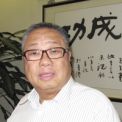
- Participation in Asian-European textile. Intriguing experiences of setting up plants in undeveloped regions
In the 1970s, Europe and the USA imposed import quotas on Asian garments. Faced with the impacts on trade caused by quotas, Yangtzekiang Garment Mfrs increased the production of high-end garments and exported suits, which were not restricted by the quota system. At the same time they set up plants in countries unrestricted by quotas. Since the 1970s, Yangtzekiang Garment Mfrs had set up plants in Macau, Singapore, Malaysia, Burma, Sri Lanka, Cambodia, Bangladesh, India, Taiwan, Lesotho, etc. The Chan family had their members stationed in different plants for management. Whenever a quota negotiation was initiated between an Asian and a European country, all the family members would seize the chance to participate in the international trading conference as a consultant for the country they were stationed in. WK Chan jokingly said that the quota negotiations were but their family meetings. In the early 1980s, a conference was convened in Brussels, which Chan Sui Kau, Chan Wing Kee and Chan Wing To attended on behalf of Hong Kong, Macau and Singapore/Malaysia respectively. Cheng Wai Chee and Cheng Wai Keung from Wintech Textiles Ltd. also attended as representatives of Hong Kong and Singapore/Malaysia respectively. In those days many of the manufacturers were Shanghaies who loved hairy crabs. Hairy crabs were then introduced in Brussels. The quota problem had been relieved since WTO replaced GATT in the early 1990s, the latter of which was a conference organization in the period from the 1970s and 1980s. Yangtzekiang Garment Mfrs’ prime concerns were transport network, labour supply and transparency of the legal system when setting plants outside Hong Kong. Given that Hong Kong was a British colony, it preferred setting up plants in areas with much US or British influence to take advantage of their parallel and comprehensible legal systems. They once invested in former British colonies such as Singapore, Malaysia, Burma, Sri Lanka, India and Bangladesh, and visited Central South America, which was under US control, to conduct inspections. The company gathered investment information from different agents such as TDC, KPMG and British banks. Banks played a particularly important role for them. For instance, assistance was rendered by British banks when the company set up plants in Bangladesh. Thanks to British colonisation, British banks such as HSBC and Standard Chartered Bank had extensive networks in British colonies or overseas territories. They could refer potential local partners to Hong Kong manufacturers, which, upon successful referrals, brought tremendous businesses to the banks. To WK Chan, TDC was important for the company in expanding their business. An expatriate staff member of TDC’s Italy office had been employed by Yangtzekiang Garment Mfrs. He had worked in Yangtzekiang Garment Mfrs’s office in Italy and their plant in Sri Lanka. WK Chan once looked for sites for setting up plants for the company all around the world. Many undeveloped countries became his eye-openers. He said that such experiences were intriguing and memorable ones. He once travelled to India for negotiations on plant setup, and was planning to have an inspection in a small town on the Indian-Pakistani border called Lydia. On the way, he stayed overnight in a small town called Bujj, where city walls were still erected. The inn he stayed in had a stable on the ground floor. WK Chan sighed that it was like going back to the times of the Bible to do business in remote towns. In the 1980s, he went for an inspection in Costa Rica. Her neighbouring country, Nicaragua, was suffering from a civil war. Leftist guerrilla groups were everywhere and WK Chan was constantly threatened by kidnapping. He had had all sorts of hardships when setting up plants in Mainland. At that time, the Chan family were already running a plant in Taiwan. They did not want the Taiwanese authorities to smell their investments in Mainland. So, WK Chan had to first leave Hong Kong for Macau, where he crossed the border onto the Mainland and arrived at Wuxi via Guangzhou and Shanghai. The roundabout single trip took 3 nights and 4 days, which was the same for the return trip. Transport in Mainland was undeveloped in the early years. Even a trip to attend the Canton Fair (China Import and Export Fair) in Guangzhou would mean exhausting travelling and poor living conditions. He missed Shiqi’s and Daliang’s delicacies though. The trips he made in his young days were his sweetest memories.
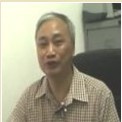
- Growing in a squatter factory producing fabrics in Fuk Wah Street
Au Kwan Cheung was born in Guangzhou in 1947. A skilled master of machinery, his father knew how to assemble and repair knitting machines and operated a small knitting factory in Guangzhou producing fabrics and garments before the late 1940s. After settling in Hong Kong in 1949, his father repaired knitting machines for well-established local knitting factories. In the early 1950s, Au Kwan Cheung came to Hong Kong with his mother to reunite with his father. The family lived in an old-type building at Pei Ho Street where several newborn brothers and sisters were added to the family. In the early 1950s, Au Kwan Cheung’s father rented the ground floor shop of a four-storey residential building at Fuk Wah Street and started a squatter factory producing fabrics which also accommodated the whole family. A covered area of over 1,000 square feet at the ground floor shop’s back-end lightwell was used to store the yarn winding and knitting machines. A wooden cockloft with a living area of about 200 square feet was also constructed inside the shop to accommodate a bed of 4-5 feet plus a table. The toilet and kitchen were also located in the lightwell. The family not only worked at the factory but also ate and slept there. As the factory usually operated at night, Au Kwan Cheung had to sleep on makeshift wooden planks in the factory’s doorway or next to the machines. His father's squatter factory produced knitted fabrics which could be used for making T-shirts. There were about five or six machines in the whole factory which operated days and nights. Au Kwan Cheung’s parents worked the days, during which his father supervised the knitting process while his mother was responsible for winding and preparing yarn. Another worker was employed to operate the machine at nights.
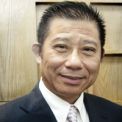
- His Principles of career success: "Doing things that others don’t", "Excelling in things that others do" a...
"Doing things that others don’t", "Excelling in things that others do" and "Exploring new things at which others excel". Leung Wai Ho continued to stress the importance of integrity and earnestness in doing things to this day. When developing a new product, he had three principles: "Doing things that others don’t", "Excelling in things that others do" and "Exploring new things at which others excel".
"Doing things that others don’t". The first principle is perhaps best illustrated by two examples. In the 1970s, Leung Wai Ho went to the US for product promotion, bypassing local intermediary trading firms and co-operating with a Silicon Valley company to produce electronic watches. Dailywin also constantly developed new watch making materials such as using glass to make watch dial plates in the early 1980s. The advantages of his policy were superior clarity and durability. The company later switched to sapphire which were 20 times more expensive than glass but never wore out. In 2003, Dailywin became the first company in the world to use plastic glass to make watch cases and watch bands. It also made cases from hard-wearing kitchen countertop material Corian. In the 1980s, cowboy chains were used as watch bands.
"Excelling in things that others do". Leung Wai Ho insisted on maintaining integrity with customers and putting quality first. He ultimately believed that the quality and reputation of Hong Kong and foreign-made goods were better than those of mainland equivalents. While quality was related to technology and machinery, Leung Wai Ho required his employees to achieve “zero returns” by being excellent “goalkeepers”.
"Exploring new things at which others excel". Dailywin stopped producing electronic watches and using textureless zinc alloy materials in the 1980s. In 2003, Leung Wai Ho sold Dailywin’s chain of Time Zones retail stores and instead turned to investing in the production of computer software. He paved the way for his move to the electronics industry with a number of Chinese Americans in developing large-scale project management software such as “8th Manage”. That same year, Leung Wai Ho also transferred Dailywin’s listing status to Wai Yuen Tong Medicine Holdings Limited and served as a non-executive director of the new venture. In doing so, he freed up more time for his DGAEFI activities and community affairs and so was able to get better acquainted with mainland officials.
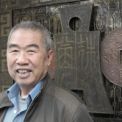
- Lacking academic qualification urged David So and his partners to found their business, Technological break...
In 1972, David opened a business with Tsang Ming Pui and Tam Kam Ho – his colleagues in Ampex Co. They set up Elec Computer Component Limited. Tsang had studied in Tong Nam Radio Institute earlier and later became Manager of the Testing Department in Ampex Co. Being good at personnel management and budgeting, Tsang was promoted to Supervisor of the System Design Department before he left. Tam came to Hong Kong in 1963. He was David’s colleague at Guangzhou Nitrogen Fertilizer Plant for several years and later entered Ampex Co. to work in the Testing Department through the recommendation of David. When they started their own business, Tam was in charge of production.
As David, Tsang and Tam did not have a university degree, their prospect of promotion in either a USA or a British company would be restricted. Therefore they decided to leave Ampex Co. to set up their own business and look for other opportunities in their career. At that time, the three of them saw that there was no production of circuit board in South-East Asia, so they determined to open a factory for the production of double-side plate perforated and printed circuit board for the markets in Hong Kong and South-East Asia. From 1969 to 1972, they did their own researches by devoting all the time after work in doing experiments until 11 every night. David thought that in the 1970s, production of any electronic parts was good in Hong Kong.
In the 1960s, Ampex Co. mainly manufactured computer memory. The three of them had only limited knowledge in circuit board. They began with reading books on basic equipment, doing primitive experiments with simple tools such as nail heads, films and Xi Hu brand perforation machines, as well as learning technologies of electroplating and perforation. Only after mastering the key technologies did they set up a factory for production. David considered it important to have a long-term plan for research and development. In doing research and development for new products, they should try their best to surpass the present technologies instead of focusing on customer satisfaction so that they could cater to new technologies in future.
During 1979 to 1980, David was thinking about developing telecommunication products. Dr Taller (editor’s note: translated version) of The Hong Kong Polytechnic Institute advised David that their company’s technologies should exceed their counterparts by three grades. At that time, before exporting to USA, Hong Kong telephones should obtain certification by the Federation Communication Commission (FCC) and pass the Electro-Magnetic Interference (EMI) test. In order to ensure that their products could pass the test without delay, David and his staff conducted vibration tests in an open area in Sha Tau Kok first. During those days, one could not find any space with more than 700 feet in length in the urban area. Therefore, David had to do the tests in the open space in the remote region. Moreover, the facilities for testing in neither The Hong Kong Polytechnic Institute nor The University of Hong Kong were fully developed. David and his staff had no choice but to risk being questioned by the police for doing the tests in the wilderness. David was satisfied with the research and development work in the early days and thought that hands-on experience could compensate for his inadequate academic qualification.
